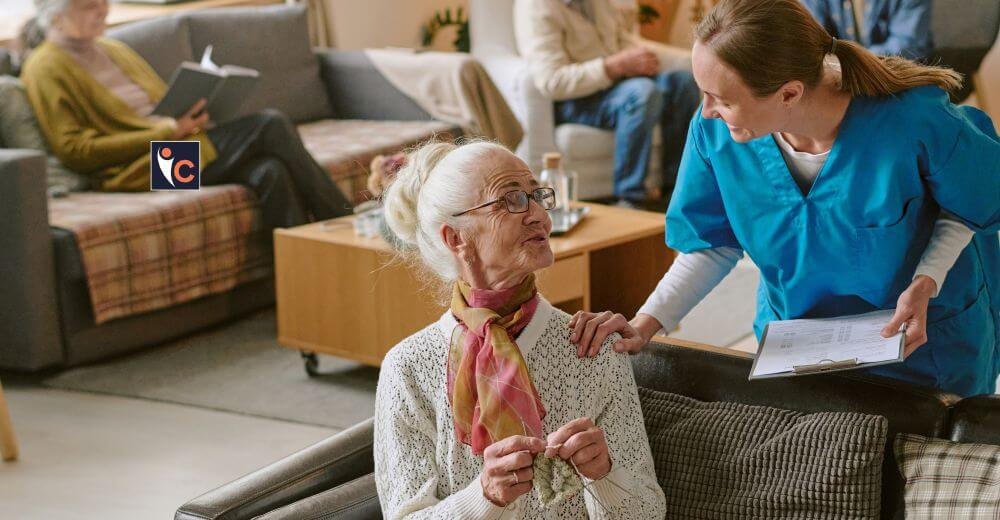The world is growing old rapidly, and the United Nations predicts that by 2050, there will be roughly twice as many people 65 years or older than there are now. Therefore, due to changes in the population, senior care facilities have to innovate since older generations prefer individualized, advanced, and integrated systems of care. Assisted living centers are making changes using new technologies, customized care, educated staff, updated buildings, and care for all cultures to meet the new needs of older adults.
Utilizing Technology in Senior Care Homes
Elder care facilities are increasingly using technology to improve the care they provide for their residents. Due to telehealth services, it is possible to consult doctors at home, which could assist in the treatment of diabetes or high blood pressure, diseases prevalent among elderly individuals. Today, senior care homes usually have video conferencing systems in the rooms and wearable devices that keep track of residents’ vital signs, resulting in fewer hospital visits and better health results.
Smart technology is playing a role in the care of seniors in facilities. Having lighting, assistants, and medicine dispensers that work with motion or voice makes things safer and more independent for people. Artificial intelligence (AI) is making more changes in senior care. AI tools review information about residents to identify possible health problems and make it possible to care for them before they get sick. Senior care facilities sometimes rely on AI chatbots to give companionship to seniors, since up to 43% of them can suffer from loneliness, according to the National Academies.
Embracing Person-Centered Care in Senior Care Facilities
Facilities that provide long-term care are now paying attention to what residents want and who they are, rather than offering the same treatment for all. Thanks to this model, residents can still make their own decisions about eating and taking part in activities. Places that use the Eden Alternative philosophy are aiming to create busy, community-minded environments where residents do meaningful activities such as gardening or having pets to help them avoid loneliness and improve their mental state.
Improving Staff Training and Retention
The growing demand for trained caregivers is a challenge for elder care facilities because the world lacks sufficient care workers. Senior care centers are addressing this challenge by investing in comprehensive training programs that comprise clinical skills and soft skills like empathy and communication required for person-centered care. Some senior care centers are even employing virtual reality simulations to train staff to deal with complicated scenarios, such as de-escalation of behavioral disturbances in dementia patients.
Retention is also critical. Senior living facilities are offering competitive wages, flexible hours, and career advancement to attract and retain employees. Senior living facilities operated by organizations like Sunrise Senior Living, for example, provide tuition reimbursement and mentor programs, which boost employee loyalty. These programs make certain that senior living facilities maintain competent and motivated personnel directly affecting residents.
Redesigning Senior Care Facilities for Accessibility
Care centers for seniors are now trying to create cozy and familiar places for their residents. Having private suites, kitchen areas, and outside areas helps residents become more independent and meet others. In addition, by using doorways that are wide enough and applying non-slippery flooring, the whole setting is accessible to residents who have mobility issues. Wellness in seniors is being supported at centers by adding features such as eco-friendly energy systems and green areas. Having biophilic design in the form of plants and lots of natural light in Scandinavian-style spaces decreases stress and boosts the mood of residents in senior housing.
Meeting Cultural and Social Diversity
With increasingly diverse aging populations, senior living facilities are changing to deliver culturally competent care. This involves the employment of multilingual professionals, providing culturally relevant meals, and observing diverse holidays. Senior care centers in urban centers, such as New York City, offer cultural competency training to staff on how to manage varying cultures. Expanding social programs at senior care facilities enhance community building and help to prevent loneliness as art therapy sessions and virtual reality trips to world wonder destinations are now available to satisfy varied interests.
Conclusion
Senior care facilities are being changed to fit the needs of older and more diverse people. These facilities are improving the way aging is viewed thanks to using technology, centered care, staff advancement, redesigning the interior, and honoring cultural diversity. With the world’s population growing older, these new ideas will maintain a kind, responsible, and caring attitude in senior care centers.





